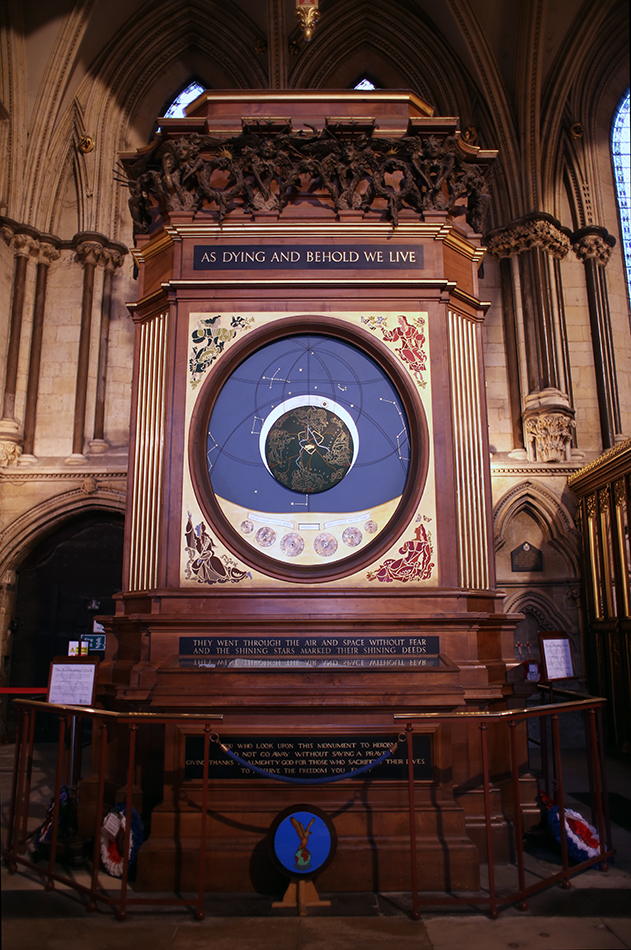
Although time and its measurement is a fundamental component of human life, a special type of clock which takes matters to the next level is the so-called
astronomical clock and whose purpose is not to measure time per se but to convey astronomical information and, in particular, the relative position of the
Sun and Moon as well as the zodiacal constellations and, in some cases, the position of the planets all as a function of time.
The oldest such effort to effectively emulate the overhead celestial sphere (ie a mini-planetarium) is the
Antikythera Mechanism which was discovered in 1901 totally by
accident by sponge divers off the coast of the Greek island of Antikythera. It has been dated to approximately 80 BC and it is believed to be the work of
Poseidonius of Rhodes. The Antikythera Mechanism is currently on display
at the National Archaeological Museum in Athens, Greece.
Note: The walled city of York in northeastern England with a population of about 140,000 inhabitants has a rich history which
dates back to the Roman times when it was founded in 71 AD and originally named Eboracum. The city lies about 280 km northwest of London and is easily
reachable by both car and train.
One of the highlights in York is the stunning York Minster Cathedral which was founded in 627 AD but rebuilt during 1230 to 1472 using limestone into a
huge Gothic church measuring 160 meters in length, 68 meters wide and 30 meters tall with three towers ranging from 60 to 72 meters in height and accompanied
by 36 bells. The internal architecture is simply stunning and includes vaulted ceilings and a rich collection of stained-glass windows throughout depicting
various religious themes. At the center of the nave, one will find a raised choir floor and an organ comrpised of 5403 pipes.
The north transept hosts the impressive astronomical clock below and which was built in 1955 as a memorial to airmen from York and the surrounding area
who lost their life durring World War II. According to the informative plaque to the left of the clock, "The clock shows the air navigator's view of York,
with the Minster in the center. The golden sun rises and sets on the horizon at the correct time throughout the year. It is surrounded by compass points,
zodiac figures and a star map. The dials at the bottom show Greenwich Mean Time on the right and star time on the left. A dial on the other side of the
clock shows North Circumpolar Stars as they are visible from the latitude of York (54°N), circling around the Pole Star.".
York Minster is open daily between 09:30 and 18:00 and the price of admission (16 GBP) includes a pass which allows the visitor free entry for the following
twelve months. A small museum below the cathedral showcases artefacts and other archaeological finds which date back to the Roman and Viking periods which
characterize York.
Note: For a view of the astronomical clock using greater focal lengths, please click
here,
here and
here.
Note: For additional results involving astronomical clocks from around the world, please click
here.
|
Body: Sun Mass: 332,900 x Earth Mass Eq Diameter: 109.1 x Earth Distance: 149 million km RA / Dec: 23h 41m 41s / +89° 19' 51" Diameter: 32.16' Magnitude: -26.8 |
 |
Date: Nov 29, 2023 Location: York Minster Cathedral, York, England Equipment: Canon EOS 6D Baader BCF2 Filter Canon EOS EF 28mm f/1.8 USM @ f2.0 Exposure: 1 x 1/50 sec ISO 640 JPG Fine Image Format 5472x3648 Image Size Custom White Balance Continuous Servo Mode Manual Mode Software: Photoshop CS6 Processing: White Balance Adjustment Resampling JPG Compression |